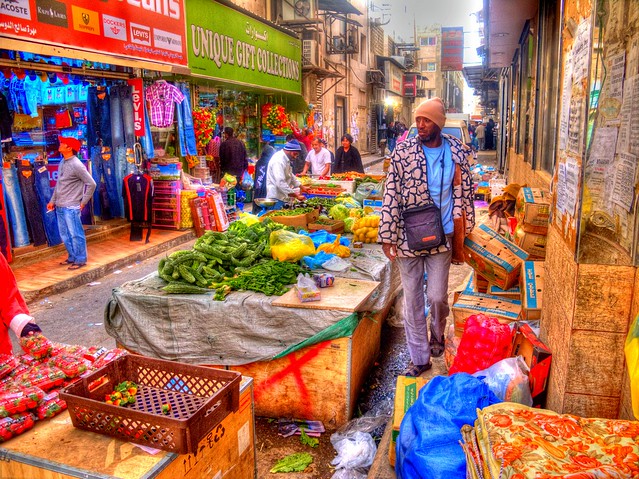 |
| Market in Riyadh. CC photo by Edward Musiak on Flickr |
Noting that in Europe regulators demand labelling of imported food and feed at GM levels above 0.9%, and noting that GMOs have been detected in raw and processed foods in Brazil, Egypt, Canada and Malaysia, scientists in Saudi Arabia carried out a survey of the food on sale in their country.
During 2009 and 2010, 200 food samples were collected in traditional markets, supermarkets and grocery stores in three regions. The samples ranged from raw soya, maize and rice to highly processed products and snacks. They were tested for the presence and quantity of the most common GM traits.
All the rice samples came out negative. More than a quarter of the soya-containing samples were positive, including six samples at a level of over 10%. In the case of maize-containing samples, 44% were positive, including four samples at a level of over 5%. The GM maize lines identified included Bt176, Bt11, T25 and MON810, all legally grown elsewhere in the world.
The Saudi Arabian study turned up one unexpected and illegal GM crop: Starlink Bt-toxin generating maize.
Back in 1998, US regulators naively approved Starlink for use in animal feed. They withheld approval for food use because Starlink's low digestibility identified it as an allergen risk in humans. When the GM maize turned up in food across America in 2000, it was banned from further cultivation. Now, 13 years on, Starlink is still present in food on the other side of the world, and at a level of over 1%.
The authors concluded by recommending that strong regulations and certified laboratories be established to monitor GM foods and crops in the Saudi market.
OUR COMMENT
Monitoring for GM in the world seems to range from inadequate to zero, largely because the infrastructure to do it isn't there.GM monitoring in food is likely to underestimate the actual level of contamination. The reasons for this are both technical and commercial. First, you need to know what DNA you're looking for and how to look for it before you can devise the test for it. Second, industry keeps the information needed to know that what and how close to its chest, usually by citing confidential business information. Third, food processing can destroy the GM bit that's needed for the detection method. Fourth, the plethora of less usual, illegal or experimental, DNA constructs out there are an even bigger unknown and will likely be missed entirely.
The consequences when (not if) a strain of GM plant, or, a GM event which has escaped into other plants, or, a pathogen arising in association with GM plants presents a major health scare, will be dire.
Just another few reasons to say NO to GM food.
SOURCES:
- Rafaat M. Elsanhoty, et al.,
2013, Prevalence of Genetically Modified Rice, Maize and
Soy in Saudi Food Products,
Applied Biochemistry in Biotechnology, 171
No comments:
Post a Comment
Thanks for your comment. All comments are moderated before they are published.